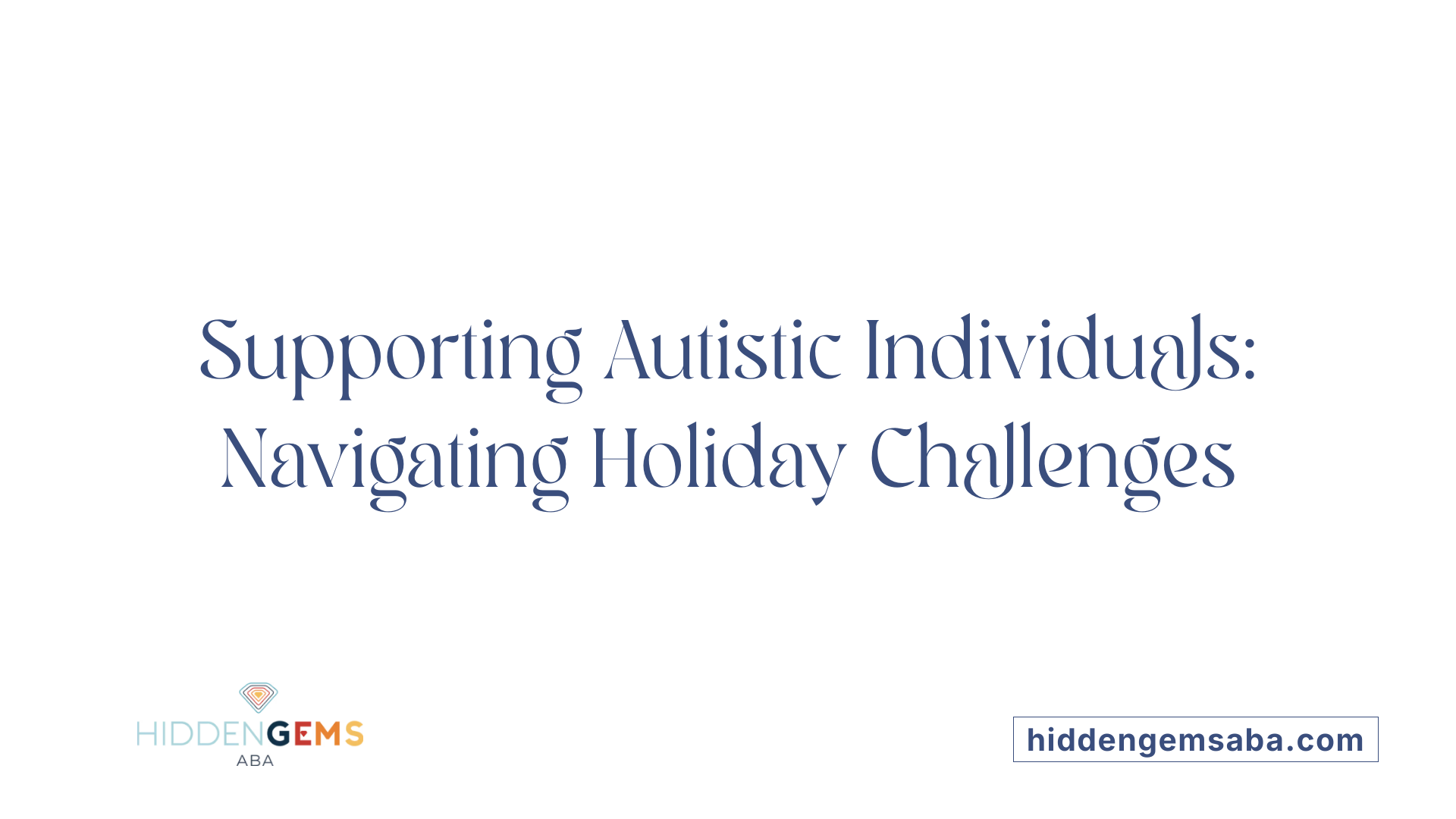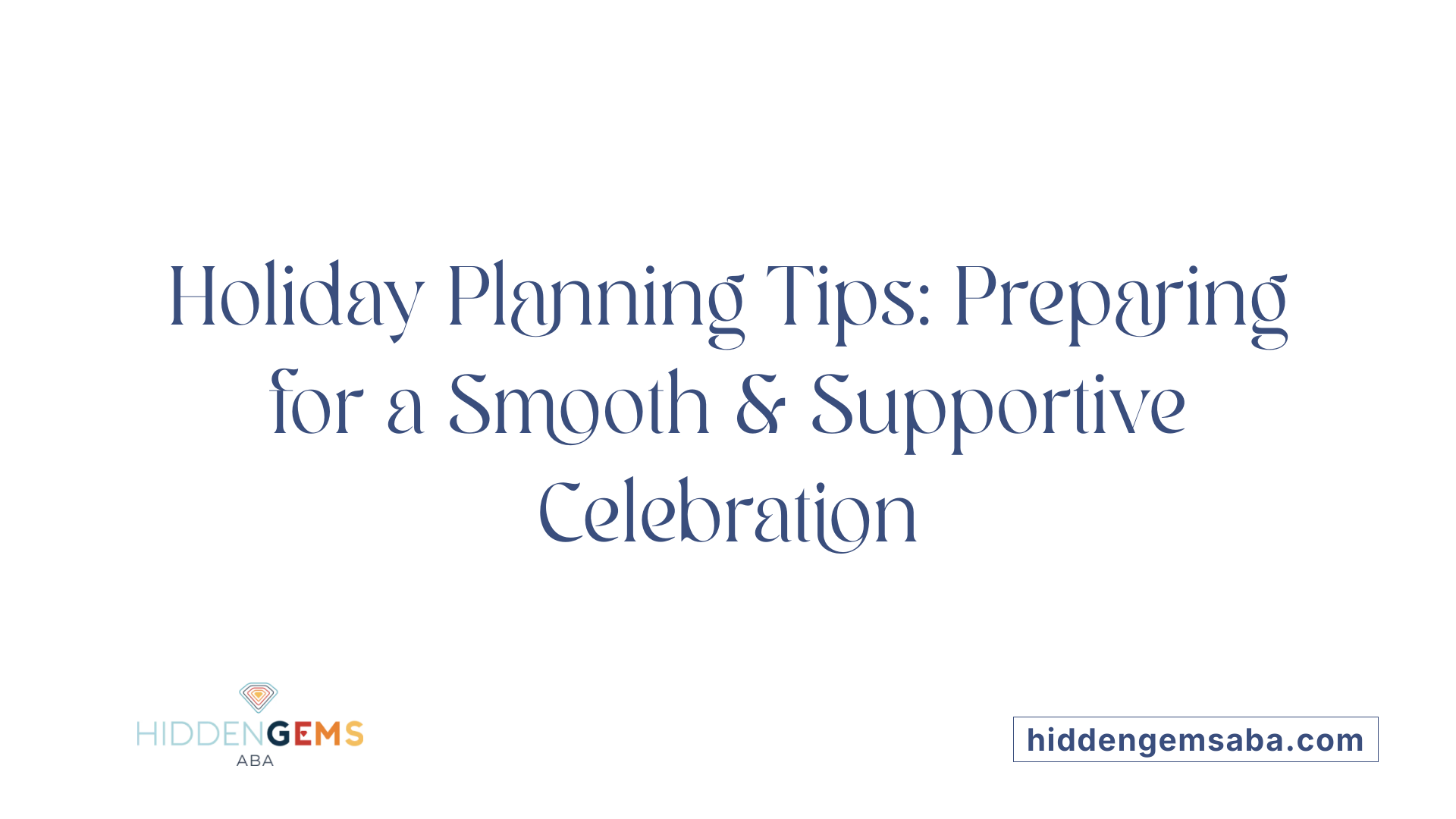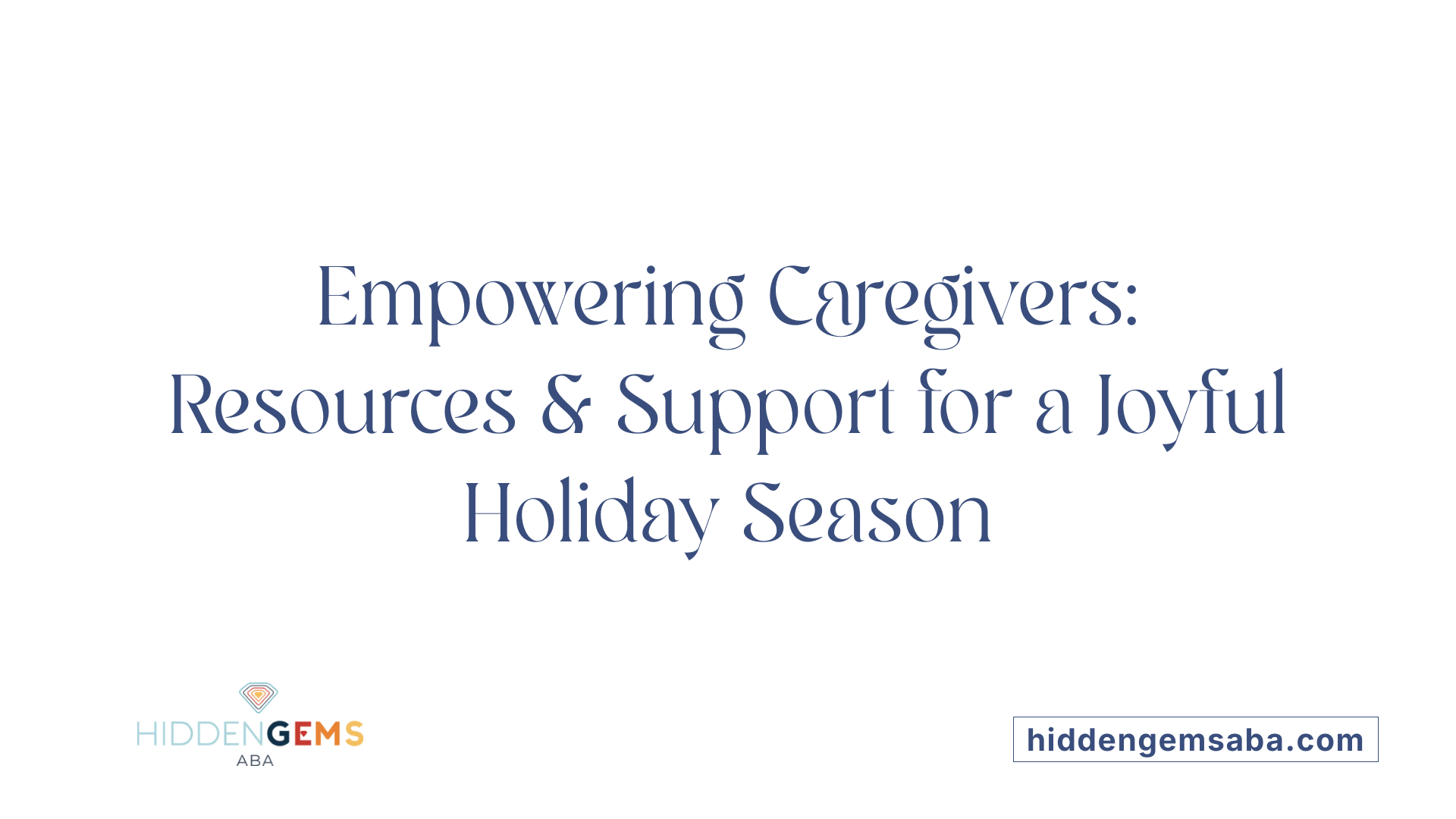Navigating the Holidays with Understanding and Preparation
The holiday season, with its vibrant decorations, bustling gatherings, and new experiences, can present unique challenges for autistic individuals. Sensory overload, routine disruptions, and social expectations can cause stress and anxiety. However, with thoughtful planning and tailored strategies, families, caregivers, and communities can create joyful, inclusive celebrations that honor each individual's needs. This article explores effective approaches to supporting autism during the holiday season, offering practical tips for managing sensory sensitivities, maintaining routines, designing autism-friendly environments, and fostering emotional well-being.
Understanding the Challenges Autistic Individuals Face During Holidays

Why do autistic people struggle with holiday celebrations?
Holidays often bring a mix of excitement and chaos, but for autistic individuals, these celebrations can pose significant challenges. One primary difficulty arises from sensory overload caused by bright lights, loud noises, and unfamiliar environments. These stimuli can be overwhelming, leading to stress and discomfort.
Changes in routines and social expectations also play a critical role. Regular schedules for meals, sleep, and activities are disrupted, causing anxiety. Additionally, unfamiliar decorations, new foods, and crowded spaces can heighten sensory sensitivities and make it difficult for autistic individuals to feel comfortable.
To help manage these challenges, planning ahead is essential. Using visual supports such as picture schedules and social stories can prepare individuals for what to expect. Creating quiet spaces or retreat areas provides a safe haven when overstimulation occurs. Tailoring holiday activities to individual preferences and keeping some routines consistent can significantly reduce stress.
Involving families in this preparation, adjusting celebrations to include sensory-friendly modifications, and respecting personal limits foster a more inclusive environment. These strategies help autistic individuals enjoy the holiday season, creating positive experiences while minimizing sensory overload and routine disruptions.
The Importance of Preparation and Planning for a Supportive Holiday

How can I support an autistic child during holiday activities?
Supporting an autistic child during holiday activities requires thoughtful preparation and sensory consideration. One effective approach is to create visual tools such as schedules, social stories, and narratives that outline what will happen during the celebrations. These tools help children understand upcoming events and set clear expectations, which can significantly reduce anxiety.
Building a sensory-friendly environment is also crucial. This can include establishing quiet spaces where the child can retreat if overwhelmed, reducing loud noises by using noise-canceling headphones, and dimming bright lights to lessen sensory overload. Incorporating familiar comfort items or favorite activities into the holiday can provide reassurance and a sense of control.
Open communication with family and friends about the child's needs and potential triggers fosters understanding and support. It's helpful to involve the child in planning, allowing them to choose activities or decorations that suit their preferences. Gradually introducing changes and traditions can make holidays more enjoyable and accessible, ensuring all family members have a positive experience.
What strategies can help manage anxiety and emotional well-being during holiday celebrations?
Managing anxiety during holiday festivities involves creating a calm, predictable environment. Incorporate calming routines like deep pressure, mindfulness exercises, or listening to soft music to promote relaxation. Having sensory supports such as weighted blankets, fidget toys, or soft lighting can help reduce sensory overload.
It is important to simplify holiday plans and prioritize what is most meaningful, avoiding over-scheduling and respecting the individual's limits. Scheduled breaks and quiet times give space to decompress and prevent overstimulation. Maintaining regular routines for meals, sleep, and hygiene helps provide a sense of stability amidst change.
Reaching out to support networks, including friends or mental health professionals, offers additional help for emotional regulation. Practicing flexibility and embracing small imperfections can ease stress and foster a forgiving, joyful atmosphere. Emphasizing positive interactions, gratitude, and kindness enhances emotional well-being, making holidays more manageable and meaningful for everyone involved.
Creating Sensory-Friendly Environments and Inclusive Activities

What are some ideas for creating autism-friendly holiday environments and activities?
Adapting holiday spaces to be sensory-friendly is an essential step in making celebrations inclusive for autistic individuals. This can include adjusting lighting by dimming bright lights or using soft, calming illumination to prevent sensory overload. Decorations should be kept simple, avoiding flickering or flashing lights, and eliminating potent scents from candles or perfumes helps create a more comfortable environment.
Providing quiet areas where individuals can retreat when they feel overwhelmed is also crucial. These spaces can be equipped with sensory supports such as noise-canceling headphones, calming toys, or weighted blankets to assist self-regulation.
Incorporating visual aids like social stories and schedules ahead of the event helps prepare autistic individuals by explaining what they can expect. This reduces anxiety and builds confidence.
Activities can be modified to be more inclusive. For example, offering sensory-friendly craft stations or adjusting traditional holiday ornaments to minimize sensory input makes participation more accessible. Communicating with family and friends about individual needs and setting boundaries ensures that everyone is comfortable and can enjoy the festivities.
Overall, thoughtful planning and environment adjustments foster a joyful and accessible holiday atmosphere. Incorporating sensory considerations and inclusive activities helps ensure that all family members can partake in holiday traditions comfortably and happily.
Supporting Families and Caregivers Through Education and Resources

How can families and caregivers be supported in preparing for the holidays?
Families and caregivers play a vital role in ensuring that holidays are positive and manageable for autistic loved ones. Support begins with accessing resources that offer guidance tailored to specific holiday needs. Organizations like VCU Health provide caregiver support groups where families can share experiences, gain advice, and receive emotional backing. Planning ahead is essential; setting realistic expectations, creating visual schedules, and preparing sensory supports can greatly reduce stress.
Involving the person with autism in small, meaningful activities helps foster a sense of inclusion and control. Maintaining routines, safety precautions, and hydration during gatherings are critical for health and well-being. Supporting open communication with family and friends about individual needs fosters understanding and empathy.
Caregivers should not overlook their own well-being. Practicing self-care, seeking support from community networks, and taking time for rest can prevent burnout. The importance of caregiver self-care cannot be overstated, especially during busy holiday periods.
What educational resources are available to help families and caregivers support autistic individuals during holidays?
A variety of resources are available to guide families and caregivers in preparing for and celebrating the holidays. Autism organizations publish comprehensive guides and safety tips specific to holidays like Halloween, Thanksgiving, and Christmas. These include social stories, visual schedules, and picture cards, which help explain festivities and set expectations.
Inclusive celebrations such as sensory Santa visits, sensory-friendly movie times, or adapted holiday events ensure that autistic individuals can participate comfortably. Sensory supports like noise-canceling headphones, calming toys, and quiet spaces are often recommended. Travel assistance programs, such as Wings for All by The ARC, help prepare children for airport procedures and travel-related challenges.
Community groups and online platforms, including the Autism Society and TACA, offer peer support, holiday tip sheets, and safety planning resources. These tools help families create safe, enjoyable, and meaningful holiday experiences for children with autism, fostering a sense of belonging and reducing anxiety for everyone involved.
| Resources | Description | How They Help |
|---|---|---|
| Autism Guides | Holiday-specific social stories and safety tips | Prepare children for what to expect and reduce fear |
| Sensory-Friendly Events | Special events like Sensory Santa | Support inclusive participation |
| Travel Supports | Wings for All, TSA Cares | Ease travel anxieties and logistical challenges |
| Community Support Groups | Autism Society, TACA | Share experiences, get tailored advice |
Creating a supportive holiday environment is achievable through accessible resources and thoughtful planning. Combining education, inclusion, and self-care helps make this season joyful for autistic individuals and their families.
Making Holidays Comfortable and Memorable for All
The holiday season offers an opportunity to foster inclusion, understanding, and joy for autistic individuals and their families. By planning ahead—using visual supports, creating sensory-friendly environments, maintaining routines, and seeking community resources—families can turn potential stressors into opportunities for meaningful connection. Emphasizing patience, flexibility, and communication helps ensure that all members feel safe and valued. With these strategies, the holiday season can be a time of celebration that respects each individual’s needs, creating lasting memories that are joyful, safe, and inclusive for everyone.
References
- Holidays | Autism Speaks
- Creating an Autism-Friendly Holiday: Strategies for a Joyful Season
- Navigating Holidays with Ease: Tips for Families with ASD
- Navigating the Holidays for Young Children with Autism or Sensory ...
- Making the Holidays Happy for All - Northeast Arc
- Tips for Autism Accessible Holidays — Lake Ridge Community ...
- Minimizing Holiday Stress for Children with Autism
- Navigating the Holidays with a Child with Autism
- Autistic Adults Share What Helped (and What Didn't) Manage the ...






